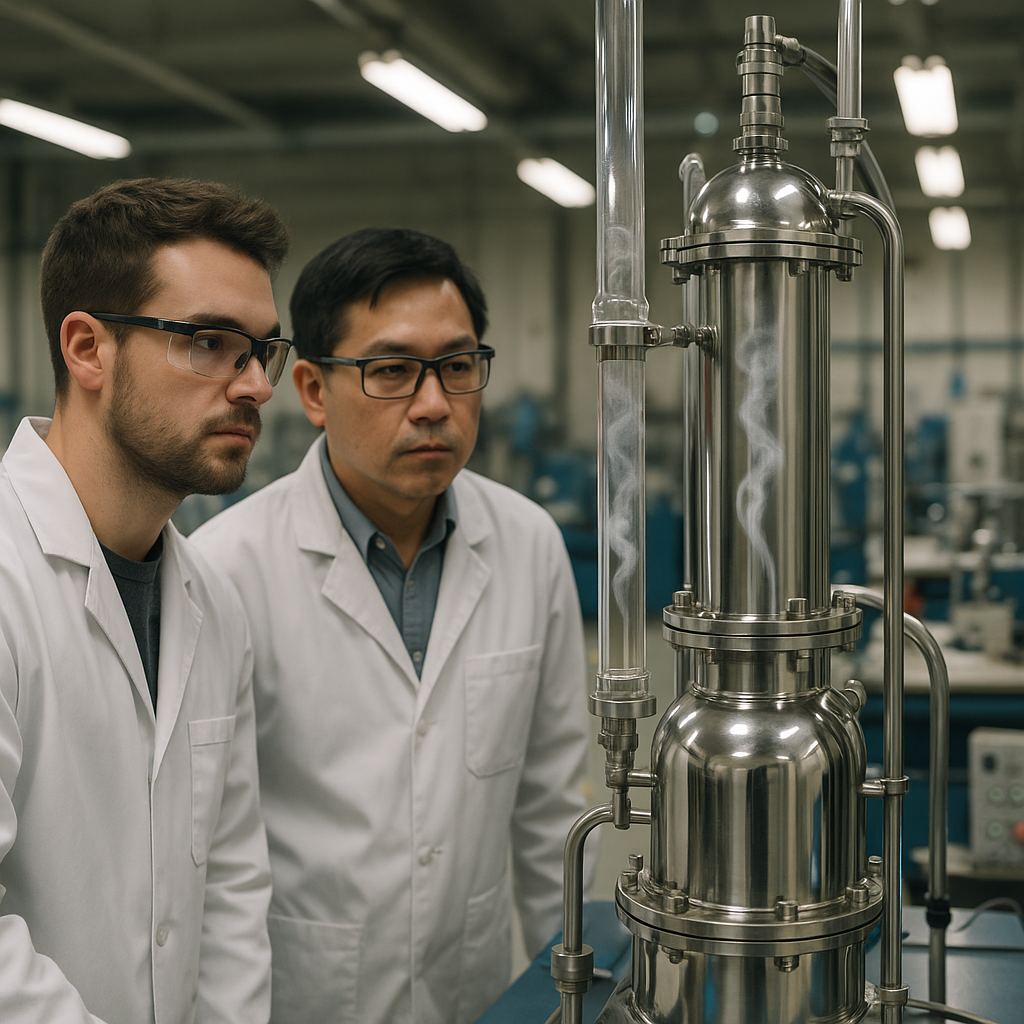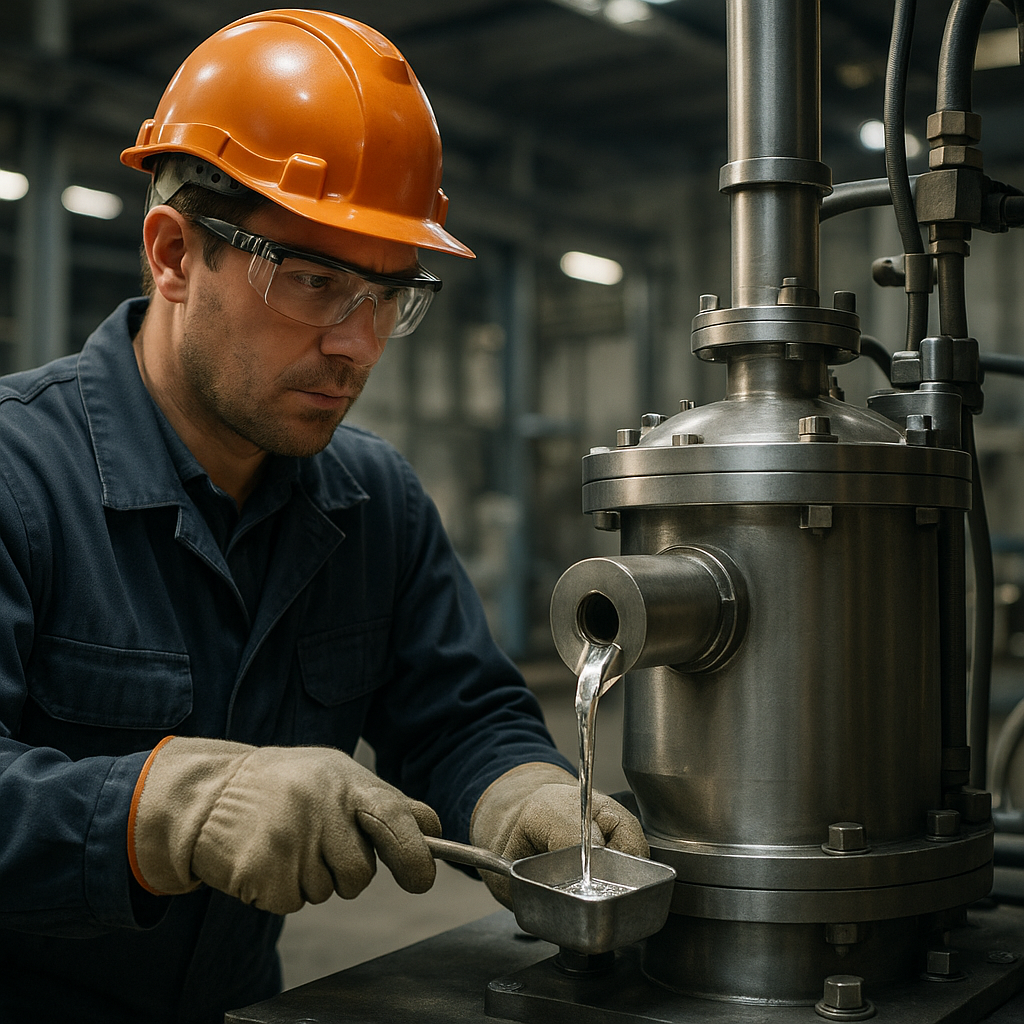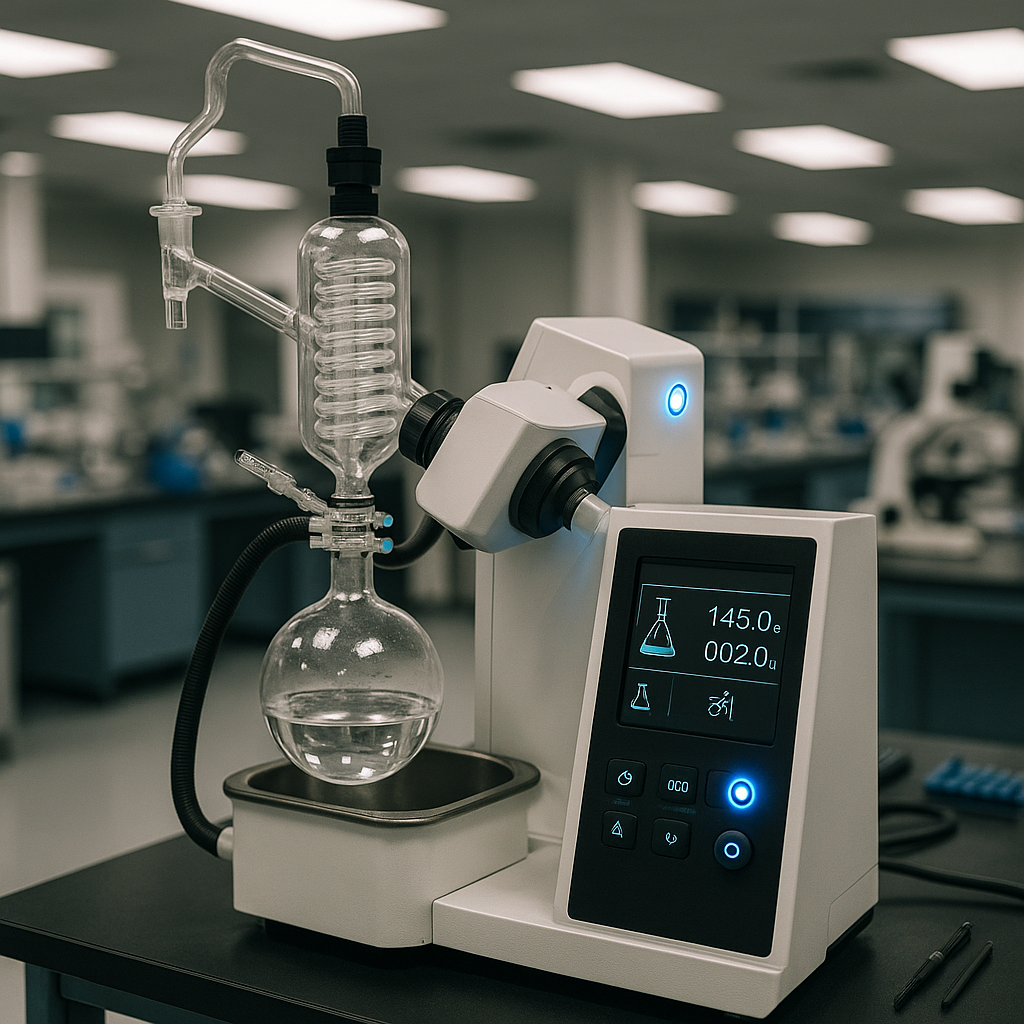5901 Botham Jean Blvd, Dallas, TX 75215
What is Vacuum Distillation for Metal Recovery?
October 14, 2025Vacuum distillation is a specialized metallurgical technique used to separate and purify metals in a controlled, low-pressure environment. This process has become essential in modern metal processing due to its efficiency in producing high-purity metals.
Vacuum distillation functions by taking advantage of the varying vapor pressures that metals exhibit at specific temperatures. By reducing atmospheric pressure within the distillation apparatus, the boiling points of metals decrease significantly, allowing for selective volatilization and separation without needing extremely high temperatures.
This technology is widely adopted in metal recovery operations for several reasons. It offers excellent metal recovery rates while supporting strong environmental protection. Additionally, the equipment required is relatively simple compared to alternative purification methods. These benefits make vacuum distillation particularly valuable for recycling operations aiming to recover and purify metals from complex waste streams.
How Does the Vacuum Distillation Process Work?

The vacuum distillation process begins with a specialized distillation unit containing the metal mixture to be separated. This unit features a crucible that holds the liquid metal alloy, a condensing system, and a vacuum pump. The setup utilizes the varying vapor pressures of different metals for effective separation.
Initially, the vacuum pump lowers the atmospheric pressure inside the chamber to extremely low levels, typically between 2-10 Pa (about 0.000015-0.000075 torr). This pressure reduction significantly decreases the boiling points of all metals in the mixture, enabling separation at more manageable temperatures.
Once the proper vacuum level is reached, controlled heating begins. The temperature is carefully increased to specific levels based on the metals being separated. As the temperature rises, metals with higher vapor pressures evaporate first, while those with lower vapor pressures remain in liquid form.
The Separation Process
Separation occurs because different metals vaporize at different temperatures under the same vacuum conditions. For example, metals like zinc, cadmium, and magnesium have higher vapor pressures than lead or tin at the same temperature, allowing selective evaporation.
The metal vapors rise from the heated source and travel toward the cooler condenser plates. Upon contact with these surfaces, the vapors condense back into solid form. The condensed metal can then be collected separately from the remaining mixture.
For instance, when separating cadmium from lead, the cadmium evaporates more readily. At 600°C under vacuum conditions, cadmium separates quickly, leaving the lead in the crucible.
Key Control Parameters
Three primary factors determine the effectiveness of vacuum distillation:
- Temperature: Precise heating ensures only targeted metals vaporize while others remain in the melt.
- Pressure: The vacuum level directly affects the metals’ boiling points. Lower pressures enable separation at lower temperatures.
- Distillation time: The process duration impacts the completeness of separation and purity of the recovered metals.
The process often requires multiple stages for complete separation. Initial processing at lower temperatures removes the most volatile elements, followed by higher temperature stages to separate less volatile components.
Efficiency Considerations
The rate of metal separation depends on surface evaporation and diffusion within the melt. As the concentration of the volatile metal decreases, its surface concentration becomes much lower than in the melt’s interior, limiting the evaporation rate as the process continues.
For example, in cadmium-lead separation, the surface concentration of cadmium might be only 1/14th of its bulk concentration. This diffusion limitation explains the slowdown in removal rate as the volatile metal depletes.
By carefully controlling these parameters, vacuum distillation achieves metal separation difficult or impossible with conventional methods. The process delivers high purity and good recovery rates without altering the metals from their metallic state.
Modern vacuum distillation systems feature sophisticated monitoring equipment to maintain optimal conditions throughout the separation process. This technology allows precise control of temperature and pressure gradients, resulting in more efficient and complete metal separation.
What Are the Key Applications and Benefits of Vacuum Distillation in Metal Recovery?

Vacuum distillation is a pivotal technology in modern metal recovery and purification. This specialized method creates low-pressure environments, enabling metals to separate based on their vapor pressures. It has applications across various industrial sectors where high-purity metals and efficient recovery are crucial.
Applications in Metal Recovery
Vacuum distillation serves several vital roles in metal recovery, offering versatility for tasks like primary metal purification and waste treatment.
High-purity metal production is a key application, with some processes achieving purity levels up to 99.9989%, making it invaluable for sectors requiring ultra-pure materials, such as semiconductors.
Additionally, it is effective for recovering valuable metals from waste streams and byproducts, minimizing resource waste, and extracting maximum value from production residues.
This technology is especially effective for treating non-ferrous solid waste, providing an environmentally sound solution for materials that are otherwise disposal challenges, working particularly well with volatile metals having higher vapor pressures.
- Zinc recovery from galvanizing waste
- Magnesium purification from recycled alloys
- Cadmium extraction from industrial byproducts
- Aluminum refinement from mixed alloys
- Tellurium purification for semiconductor applications
Benefits of Vacuum Distillation in Metal Recovery
Vacuum distillation offers numerous advantages over conventional methods, extending beyond purification to include environmental, operational, and safety benefits.
High recovery rates are a primary advantage, achieving efficiency rates up to 98%, significantly reducing material losses and enhancing economic returns.
The process’s environmental benefits include operating in closed systems that prevent gas and effluent release, and it eliminates the need for harmful agents common in traditional methods.
Energy efficiency is another advantage, as vacuum distillation operates at lower temperatures than atmospheric processes, resulting in cost savings and reduced carbon footprints.
- Preservation of metals in their metallic state without oxidation
- No wastewater generation during processing
- Reduced energy consumption compared to atmospheric distillation
- Safe handling of volatile or explosive compounds
- Streamlined operation with fewer processing steps
An additional benefit is its capability to process thermally sensitive materials safely, using vapor pressure rather than high temperatures. This makes it ideal for recovering metals from hazardous waste streams.
The straightforward equipment requirements and simple process flow enhance its appeal for metal recovery applications, allowing for continuous high productivity compared to other methods.
| Method | Metal Recovery Rate (%) | Energy Consumption | Purity Level (%) |
|---|---|---|---|
| Vacuum Distillation | Up to 98% | 30-40% less than traditional methods | 99.9989% for aluminum |
| Traditional Methods (e.g., Electrolysis) | 95-98% | Higher energy consumption | Less than 99.996% |
For industries working with metals like zinc, magnesium, and cadmium, vacuum distillation offers compelling benefits, separating metals without altering their metallic state and preserving their value and utility, unlike methods requiring further processing.
What Recent Advancements Have Been Made in Vacuum Distillation Technology?

Vacuum distillation technology has seen significant improvements, especially in metal recovery applications. Researchers have made breakthroughs in understanding metal behavior under vacuum conditions, leading to more efficient and environmentally friendly recycling processes.
A key development is the sophisticated modeling of vapor-liquid equilibrium (VLE) analysis. Scientists now use thermodynamic models like the non-random two-liquid (NRTL) model to accurately predict activity coefficients of metal alloy components during vacuum distillation. This modeling enables precise separation of metals with different vapor pressures at specific temperatures, enhancing process efficiency.
Recent studies have shown calculating activity coefficients for binary alloy systems helps optimize distillation parameters like temperature, pressure, and duration. Engineers can predict metal behavior during distillation, reducing guesswork and trial-and-error methods.
Another notable advancement is using vacuum distillation to recover valuable metals from complex waste streams. Traditional metal recycling often involves chemical treatments that generate waste and pollution. In contrast, vacuum distillation offers a cleaner alternative, achieving remarkable purity levels while minimizing environmental impact.
A compelling case study demonstrates vacuum distillation successfully separating magnesium from aluminum-magnesium alloys. Using optimized parameters based on VLE modeling, researchers achieved aluminum purity levels of 99.9989% with a direct recovery efficiency of 97.98%. This is a significant improvement over conventional methods, which struggle to reach such purity without material losses or environmental impacts.
The technology is also becoming more energy-efficient. Modern vacuum distillation systems incorporate heat exchangers that recycle energy within the process, achieving up to 95 percent energy efficiency. Some advanced systems now feature automatic cleaning mechanisms for heat exchangers, ensuring optimal heat transfer during extended operations.
Perhaps most promising is the expansion of vacuum distillation applications beyond traditional metal recovery. Researchers are exploring its use for treating electronic waste, battery materials, and other complex metal-containing products. This versatility makes vacuum distillation a valuable tool in circular economy efforts, where maximizing material recovery while minimizing environmental impact is crucial.
Technological refinements in vacuum distillation also address previous limitations in handling contaminated or mixed metal sources. Innovations in condensation stages and pH control systems now ensure consistent quality output even with variable input materials, making the technology more robust for industrial applications.
These advancements collectively represent a significant step forward in sustainable metallurgy. As industries face growing pressure to reduce waste and emissions, vacuum distillation technology offers a promising pathway to cleaner, more efficient metal recycling processes with wide-ranging applications.
| Advantages | Vacuum Distillation | Traditional Methods |
| Energy Efficiency | Lower operating temperatures, significant energy savings | Higher temperatures, significant energy consumption |
| Purity Levels | Can achieve up to 99.9989% purity | Struggles to achieve comparable purity without losses |
| Environmental Impact | Minimal emissions, no wastewater | Possible emissions and waste are generated |
| Process Complexity | Simplified equipment and process flow | Complex equipment and process flow |
| Recovery Rate | High recovery rates, up to 98% | May not achieve as high recovery rates |
| Material Handling | Preserves metals in metallic state | Possible conversion to compounds requiring further processing |
Conclusion: The Future of Vacuum Distillation in Metal Recovery

Vacuum distillation has emerged as a pivotal technology in metal recovery and recycling. Its ability to efficiently separate and purify valuable metals without producing wastewater or harmful emissions makes it an environmentally sound solution that aligns with modern sustainability goals. The technology achieves exceptionally high recovery rates, often exceeding 99% for precious metals, while maintaining superior purity, underscoring its vital role in conserving finite resources.
As global demand for metals rises and primary ore grades decline, vacuum distillation will become increasingly important in resource recovery strategies. Ongoing research and technological advancements are broadening its applications beyond traditional metals, including rare earth elements and critical materials essential for renewable energy technologies.
For businesses and municipalities seeking sustainable recycling solutions that maximize recovery while minimizing environmental impact, contact Okon Recycling at 214-717-4083.
